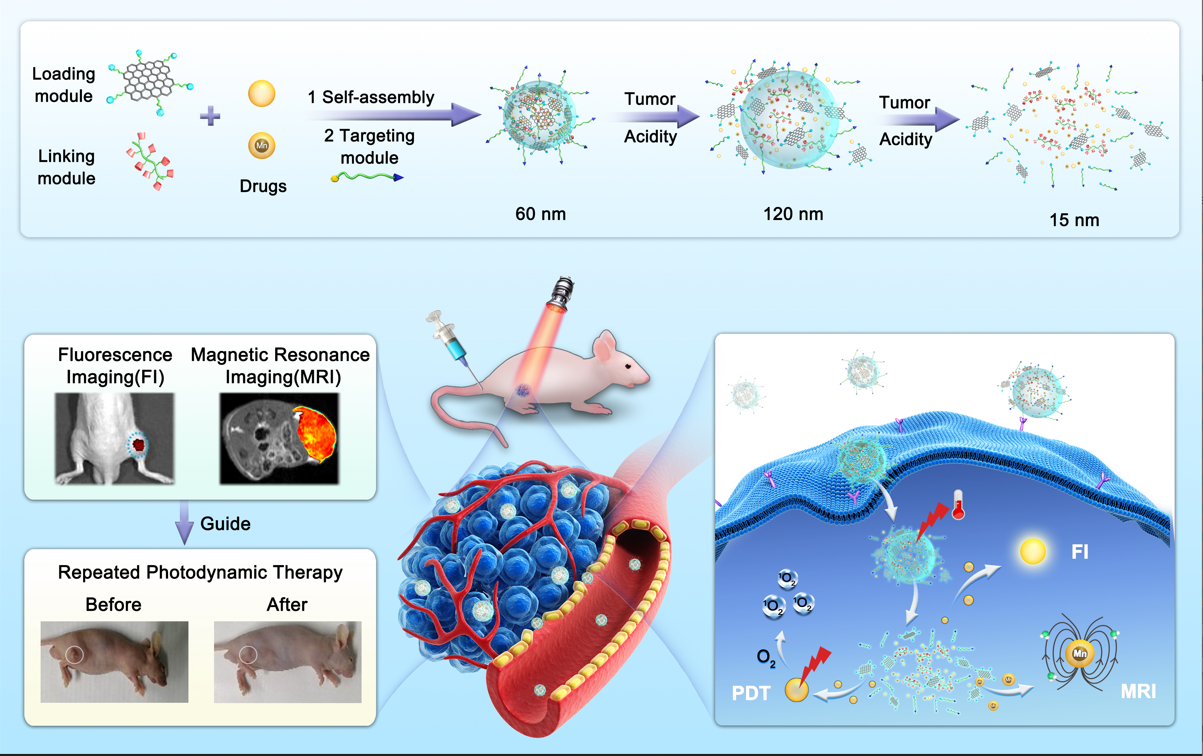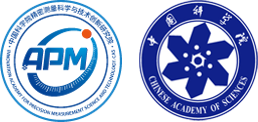

Ultrasensitive Magnetic Resonance Research Group developed Graphene Quantum Dots-Based Nano-Transformers for tumor long-period MRI and effective treatment
Drug overdose is one of the most importance causes that leads to side effects in cancer imaging and treatments. Due to the insufficient targeting and short residence time, it is difficult for drugs to accumulate in tumor areas. Therefore, large amounts of drugs are used to achieve expected image contrast and therapeutic effect.
Recently, Ultrasensitive Magnetic Resonance Research Group developed a nano-vehicle, graphene quantum dots-based nano-transformers (GQD NT), that could intelligently “identify” and “deform” in tumors. By enlarging and then disassembling in tumor microenvironment, the residency time of the loaded-drugs was prolonged and the penetration of drugs was enhanced, resulting in long-term MRI and highly effective treatment of tumors with low drug doses. This work has been published in Advanced Materials, entitled “Activatable Graphene Quantum Dots-Based Nano-Transformers for Long-Period Tumor Imaging and Repeated Photodynamic Therapy”.

Drug molecules could be simply encapsulated in GQD NT during the self-assembly process. The continuous GQD NT deformation induced by tumor acidity prolonged the retention and penetration of the loaded drugs in tumor areas. The water dispersibility of hydrophobic mangano-porphyrin (Mn-TCPP) was significantly improved after encapsulated into GQD NT. The longitudinal relaxation rate (r1) of Mn-TCPP@GQD NT reached 12.7 mM-1s-1, which is 2.5-5.1 times higher than that of clinical T1-MRI contrast agents (r1 = 2.5-5.1 mm-1s-1). Meanwhile, the injection dose of Mn-TCPP was only 22.4 μM/kg, which was 4.5-17.9 times lower than that of clinical T1-MRI contrast agents (100-400 μM/kg).
A repeated photodynamic therapy (PDT) strategy was designed to decrease the photosensitizer dose by using GQD NT. Only 1.76 μmol/kg of photosensitizer was introduced in single repeated PDT group, and the tumor volume decreased by more than 82%. After two repeated PDT cycles, four of five tumors were ablated. Notably, the total photosensitizer dose was reduced to 3.5 μmol kg−1, which was 10–30 times lower than that of the reported PDT strategies.
In conclusion, the designed nanotransformer provided an intelligent vehicle for next generation nanotherapeutics, exploiting a promising approach for long-time tumor imaging and efficient treatment.
https://onlinelibrary.wiley.com/doi/10.1002/adma.202211337

Innovation Academy for Precision Measurement Science and Technology, CAS.
West No.30 Xiao Hong Shan, Wuhan 430071 China
Tel:+86-27-8719-8631 Fax:+86-27-8719-9291
Email:hanyeqing@wipm.ac.cn
鄂ICP备15017570号-1